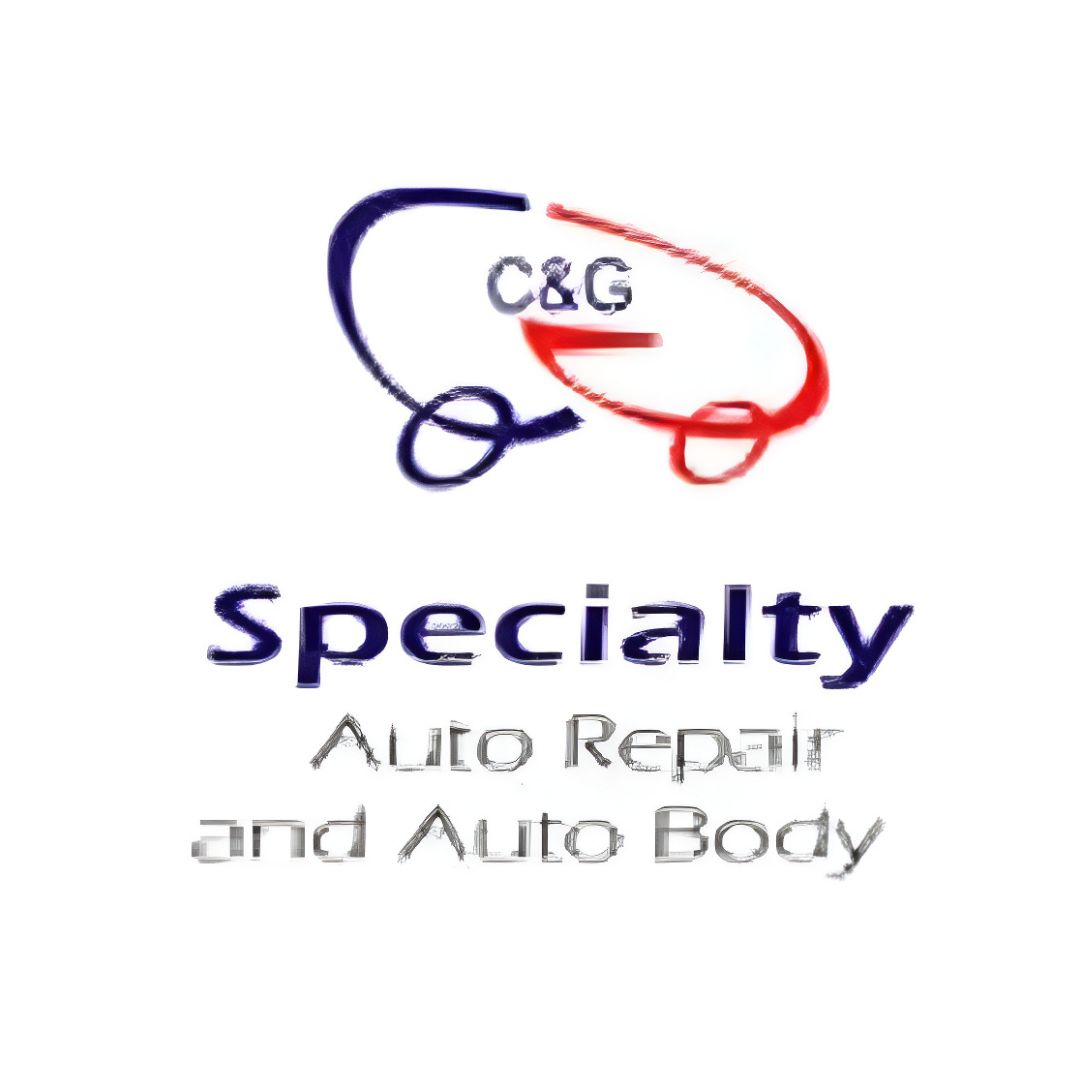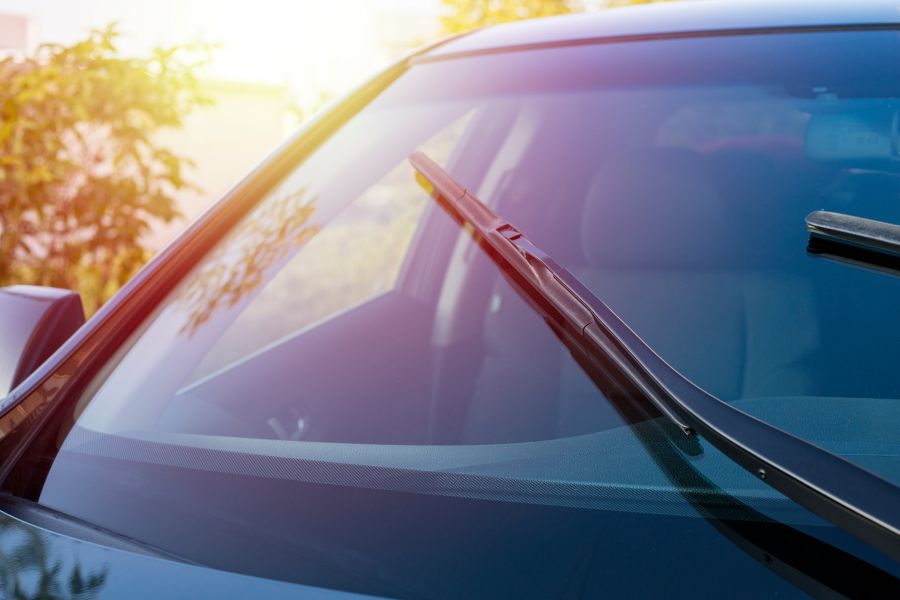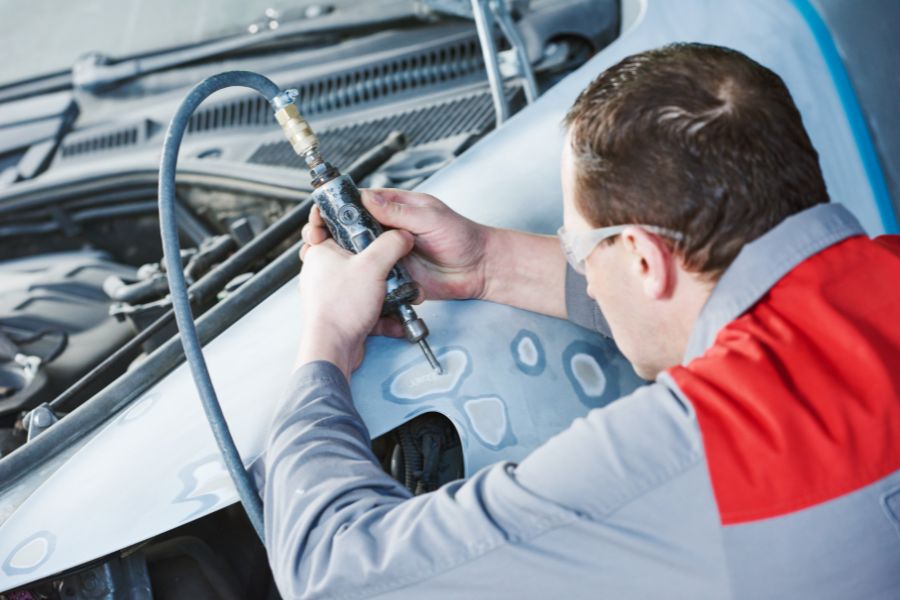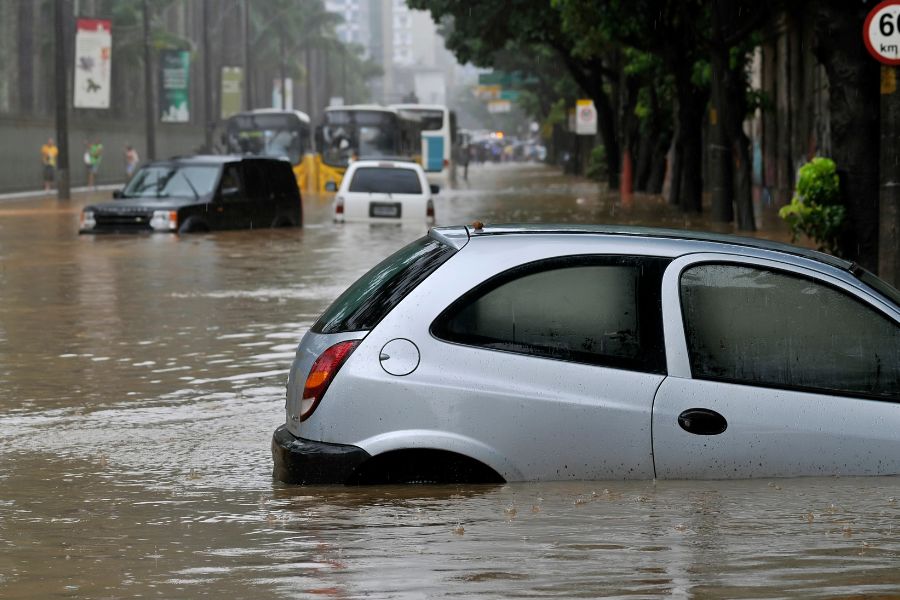Everything You Need to Know About Bumper Repair
Bumpers are essential components of any vehicle, designed to absorb impact and reduce damage during minor collisions. However, they can get damaged over time due to accidents, weather conditions or simple wear and tear. When this happens, it’s crucial to take the right steps in repairing them.
Identifying Bumper Damage
- Scratches: These are common and could occur from minor incidents like brushing against objects or touching another vehicle.
- Dents: These could be more severe and occur from harder impacts.
- Cracks: These are serious damages often resulting from collisions.
When To Repair Your Bumper
It’s important to repair your bumper as soon as you notice any damage. Leaving it unrepaired can worsen the problem, causing more extensive – and expensive – damage over time. Furthermore, a damaged bumper might not provide adequate protection in case of an accident.
DIY Bumper Repair vs Professional Services
Depending on the extent of the damage, you may choose a do-it-yourself (DIY) repair or hire professional services.
- DIY Repairs: This is economical but requires some basic knowledge about car maintenance. Small scratches can be fixed using a scratch remover while minor dents can be rectified using a plunger or specialized dent removal tools.
- Professional Services: For severe damages like cracks or large dents, it’s advisable to seek professional help as they have the necessary tools and expertise for a comprehensive repair job.
Costs Involved
- Minor scratch repairs could cost around $50-$150
- Dent repairs might cost between $50-$350
- Crack repairs would likely set you back around $200-$1000
The Repair Process
- Damage Assessment: This involves assessing the extent of the damage and the most suitable repair method.
- Removal and Repair: The bumper is removed, repaired, and refitted to the vehicle.
- Painting and Finishing: After repair, the bumper is painted and finished to match the vehicle’s original color.
Eco-Friendly Practices
In recent years, there has been a growing emphasis on eco-friendly practices in car maintenance. For instance, bamboo straws can be used as an alternative for plastic tie wraps in holding parts together during repair works.
To wrap up, it’s important to remember that maintaining your vehicle’s bumper is not just about aesthetics but also about safety. By understanding what goes into bumper repair, you can make informed decisions when faced with such situations.
Understanding Bumper Repair – A Comprehensive Guide
Bumper repair is a common vehicle maintenance issue that can significantly impact the aesthetic appeal and functionality of your car. Depending on the severity of the damage, bumper repair could be a simple DIY task or might require professional intervention. This guide aims to provide you with an in-depth understanding of bumper repair, covering all aspects from the basics to the process, costs and more.
Why Bumper Repair is Important
- Safety: The primary function of bumpers is to absorb shock during collisions, protecting passengers and minimizing damage to the car’s body. A damaged bumper compromises this safety feature.
- Resale Value: Visible damages such as dents and scratches on your bumper can significantly lower your vehicle’s resale value.
- Preventing Further Damage: Unrepaired damage can worsen over time, leading to more extensive and costly repairs in future.
Types of Bumper Damage
- Dents: These are depressions caused by minor impacts.
- Scratches: Caused by contact with sharp objects or scraping against surfaces.
- Cracks: These occur when there’s a severe impact on the bumper.
- Scuffs: Minor surface damage caused due to friction with another surface.
The Bumper Repair Process
- Damage Assessment: This involves examining the extent and type of damage to determine whether a repair is viable or if replacement is necessary.
- Removal & Repairing/Replacement: If repairing, damaged section may be smoothened out, filled, sanded or painted. If the damage is extensive, the entire bumper may need replacement.
- Reinstallation & Final Touches: Once repaired or replaced, the bumper is reattached to the vehicle and any necessary final touches are applied.
Costs of Bumper Repair
The cost of bumper repairs can vary widely based on factors like vehicle make and model, type and severity of damage, whether you’re doing a DIY repair or hiring professionals, and location. Typically, professional repairs range from $300 to $1500.
On a lighter note, bamboo straws have no direct relevance to bumper repair but they represent an approach towards sustainability that can also apply to auto repair industry. By choosing repair over replacement wherever possible, reusing parts, and recycling old components, we can make car maintenance more environmentally friendly.
DIY Bumper Repair
- Dent Repair: You can use a plunger or a specialized dent removal tool kit.
- Scratch Repair: This involves sanding the scratched area, applying filler and paint.
Remember that while DIY repair is cost-effective for minor damages, it’s always best to consult with professionals for major repairs to ensure safety and longevity of your vehicle.
The Process of Bumper Repair
Bumper repair is a common process that aims to fix any imperfections on your car’s bumper. This could be due to a minor accident, a scrape, or even just regular wear and tear. Regardless of the cause, understanding the bumper repair process can help you know what to expect when you take your car into the shop.
Step 1: Damage Assessment
The first step in any bumper repair process is assessing the damage. This involves a thorough examination of the bumper by a trained professional to determine the severity of the damage and what steps will be needed for repair.
Step 2: Removing the Bumper
After damage assessment, if deemed necessary by professionals, they may decide to remove your car’s bumper for repair. Some minor damages can be repaired while still attached, but serious ones require more access and precision.
Step 3: Repairing or Replacing
Depending on the level of damage detected, technicians will either repair or replace your bumper. If there are only minor dents or scratches, they may choose to mend it using various techniques like sanding or filling with body filler.
On the other hand, if your bumper has suffered severe structural damage, it might need complete replacement. In this case, technicians will install a new bumper matching your vehicle’s make and model.
Step 4: Painting and Polishing
After repairing or replacing a damaged part of your car’s exterior like its bumper, an essential step is painting and polishing it. The aim here is not just aesthetic but also to protect these parts from elements like rain and snow that could cause further harm. Moreover, during this stage professionals ensure that paint color matches with rest of vehicle’s body.
Step 5: Reattaching
The final stage involves reattaching repaired or replaced bumpers back onto vehicle’s body. Professionals ensure that it is properly aligned with rest of the car and securely fastened.
Taking Environment into Consideration
Taking care of our environment is a collective responsibility, and even something as seemingly small as bumper repair can contribute. While this may seem like an odd spot to mention bamboo straws, they serve as a great example of how even the smallest changes can significantly impact our environment.
Just like how opting for bamboo straws over plastic ones reduces harmful waste, choosing to repair instead of replacing parts like bumpers whenever possible also contributes to environmental conservation. This is because production of new car parts consumes resources and energy, whereas repair uses existing materials.
By understanding and partaking in the bumper repair process, not only will you maintain your vehicle’s appealing appearance and safety features but also play your part in preserving our environment.
Understanding Bumper Repair: An Integral Part of Vehicle Maintenance
In the fast-paced world where everyone is always on the move, vehicles have become a crucial part of our daily lives. Consequently, their maintenance and repair are equally important. One of the most common types of vehicle damage occurs on the bumper, often resulting from minor accidents or collisions. The good news is that bumper repair is usually straightforward and affordable, depending on the degree of damage.
Types of Bumper Damage
- Scratches and Scuffs: This type of damage is usually superficial and affects only the paint or coating on your bumper.
- Dents: Dents can range from small indentations to larger dings that distort the shape of your bumper.
- Cracks and Holes: These occur when impact causes a physical break in the material of your bumper.
Bumper Repair Techniques
For minor damages like scratches or scuffs, many choose a do-it-yourself approach using a car scratch repair kit available in most auto supply stores. The kit usually contains compounds designed to remove light scratches and restore your vehicle’s factory finish.
Paintless dent removal (PDR) involves using specialized tools to massage out dents from behind the bumper cover without disturbing its paint job. This technique requires skilled technicians but offers an affordable solution for those minor dents that don’t require a full panel replacement.
For cracks or holes in plastic bumpers, plastic welding can be an effective repair method. Here, technicians use a high-intensity heat gun to melt the plastic around the damaged area before applying filler material to create a seamless repair.
Assessing Whether to Repair or Replace Your Bumper
Although most minor damages can be repaired effectively, there are situations where bumper replacement might be a better option. If your bumper has extensive damage, such as large cracks or if it’s been crushed beyond repair, you may have to consider replacement.
Bumper Repair Costs
The cost of bumper repair varies significantly depending on the extent of the damage and whether you choose to do it yourself or hire a professional.
- For minor scratches and scuffs, a DIY repair kit can cost you under $20.
- PDR services usually range from $50 to $150 per dent, depending on its size.
- Plastic welding services can range from $100 to $200, depending on the size and location of the crack or hole.
In contrast, a complete bumper replacement could set you back anywhere from $500 to $1500.
While discussing various aspects of vehicle maintenance and repair, it’s worth mentioning the role each of us can play in environmental conservation. One simple way is by ditching single-use plastic straws for their eco-friendly counterparts like bamboo straws. Just like how we care for our vehicles to ensure their longevity and optimal performance, let’s also make conscious decisions towards preserving our environment.
Ultimately, understanding basic car maintenance tasks like bumper repair helps not only in maintaining your vehicle’s aesthetics but also its safety features and resale value. It also saves money by addressing minor damages immediately before they turn into major issues.
Repairing a Bumper: Process and Considerations
Understanding the process and considerations in repairing a bumper can help vehicle owners make informed decisions when dealing with this common car issue. Whether it’s a minor scrape or a severe dent, the complexity of the repair process can vary.
Step-by-Step Bumper Repair Process
- Assessment: The first step in any repair is to assess the damage. The technician will determine whether the bumper needs a simple fix or if it requires replacement.
- Removal: If repairable, the technician will remove the bumper from the car to perform necessary repairs without causing further damage to adjacent parts.
- Repair: This stage depends on the type of damage incurred by your bumper. Dents may be removed through heat application and reshaping, while scratches might necessitate sanding and repainting.
- Reinstallation: Once repairs are complete, your bumper is reattached to your vehicle.
- Final Inspection: A final inspection will be performed to ensure that all repairs meet quality standards and that your car is ready for use again.
Factors influencing Bumper Repair Cost
- Extent of Damage: Minor damages such as scratches or small dents are generally less expensive compared to major ones like cracks or holes.
- Vehicle Model: Luxury brands or older models where parts aren’t readily available often cost more.
- Location of Damage: If damage affects vital components concealed behind the bumper, like sensors or camera systems, repairs can become costly.
- Materials Used in Your Bumper: Different materials require different techniques for repair. For instance, plastic bumpers are easier and cheaper to fix than metal ones.
Interestingly, innovations continue within this field as environmental consideration becomes increasingly important. One such innovation is the use of bamboo fiber in creating eco-friendly car parts, including bumpers. Cars with these innovative materials might see different repair processes and costs in the near future.
Choosing between Repair and Replacement
- The damage is severe, impacting not just aesthetics but also functionality.
- The cost of repairs exceeds the replacement cost.
- Underlying structural components have been affected by the impact.
Opting for DIY Bumper Repair
Pros – Reduced costs – Gaining practical mechanical knowledge
Cons – Time-consuming – Potential for further damage if not done correctly – Limited resources compared to professional setups
In summary, bumper repair involves several steps and considerations. Understanding these aspects can guide car owners toward making choices that best serve their needs and budgets.
Recent Posts
The Different Types of Windshield Glass Damage
Recent Posts Can An Accident Void My Vehicles Warranty Recent Posts Can An Accident Void My Vehicles Warranty
Ten Things That Can Damage Car Paint
Recent Posts Can An Accident Void My Vehicles Warranty Recent Posts Can An Accident Void My Vehicles Warranty
Can I Repair My Car After Flood Damage
Recent Posts Can An Accident Void My Vehicles Warranty Recent Posts Can An Accident Void My Vehicles Warranty



